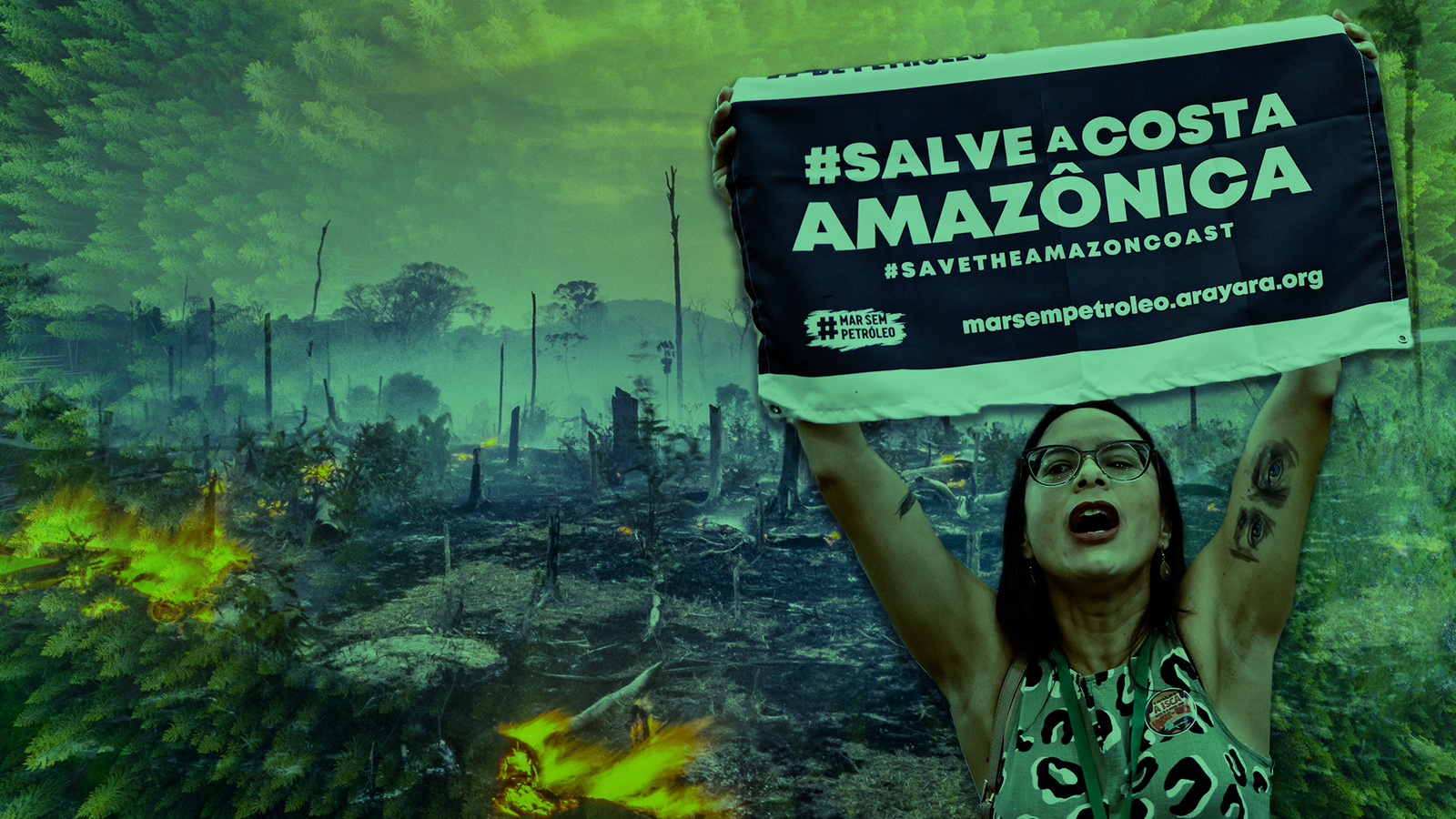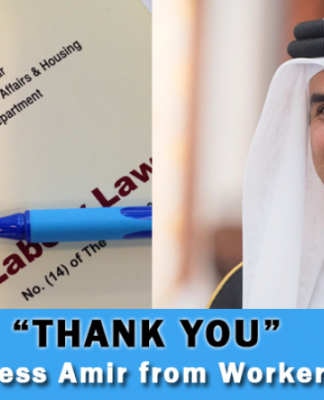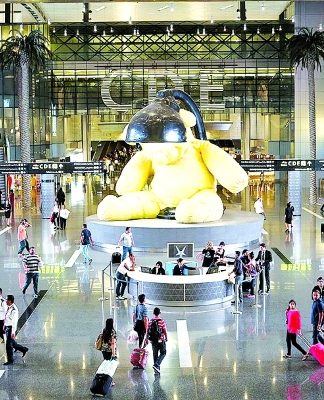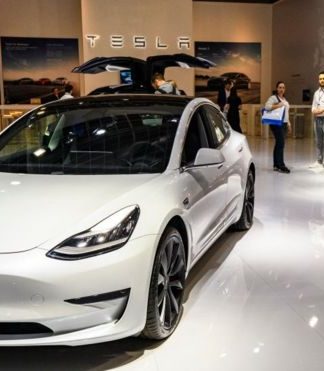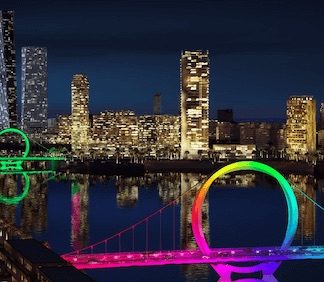Explainer
Countries are meeting to talk about Amazon rainforest – here’s why it’s so important to protect it
While the Amazon is home to millions of people and contains one in 10 known species on Earth, it is also a crucial carbon sink for the climate. But having lost more than 85 million hectares, about 13% of its original area, the rainforest is under threat.
Olive Enokido-Lineham
News reporter @OliveLineham
Tuesday 8 August 2023 18:36, UK
Listen to this article
0:00 / 5:26
1X
BeyondWords
Audio created using AI assistance
Why you can trust Sky News
It’s twice the size of India, spread across eight countries, a territory, and home to over 16,000 tree species – the Amazon rainforest is one of the most biodiverse places on the planet.
Today, leaders and representatives of the eight countries it spans will meet for the first time in 14 years hoping to reach an agreement on plans to protect it from threats like deforestation and crime.
Here we explain why it’s so important to protect the world’s largest rainforest, the threats it currently faces and what we’re expecting from the meeting.
Brazil covers two-thirds of the Amazon, but it also sprawls across Bolivia, Peru, Ecuador, Colombia, Venezuela, Guyana, Suriname and the territory of French Guiana.
Colonised and exploited – how govts have viewed Amazon
It contains one in 10 known species on Earth, according to the World Wildlife Fund, has about 20% of the world’s freshwater reserves and thousands of tree species which help create and sustain the ecosystem.
Alongside its contribution to biodiversity and serving as a home to millions of people, it is also a crucial carbon sink for the climate, playing a vital role in absorbing carbon dioxide.
Protecting it is vital to reducing the impact of climate change because of the vast amount of climate-warming greenhouse gas it absorbs.
But governments have historically viewed it as an area to be colonised and exploited, with little regard for sustainability or the rights of its Indigenous peoples.
Deforestation and the politics
The main environmental threat to the Amazon is deforestation and politics plays into it.
The biome has lost more than 85 million hectares (211 million acres), or about 13% of its original area, according to the Monitoring of the Andean Amazon Pact.
Most of that destruction has come in the past half-century and Brazil has been the main culprit. Cattle ranching and soybean crops have expanded dramatically due to new technology and the global demand for grain and beef.
Forty-one per cent of deforestation in Brazil’s Amazon has come in Para state, where so much land has been converted to run some 27 million cattle that it’s the leading emitter of greenhouse gases among Brazilian states, according to Climate Observatory, a network of environmental non-profit groups.
Brazil’s controversial former president Jair Bolsonaro, who led the country between 2019-2022, weakened Brazil’s environmental enforcement agency and urged more commercial farming and mining in the rainforest, claiming it would help fight poverty.
An area of forest larger than the US state of Maryland was destroyed during the first three years of his presidency.
But tackling deforestation was central to Brazilian president Luiz Inacio Lula da Silva’s election campaign last year. He pledged to stop all Amazon destruction and preliminary government data suggests his methods might be working.
Deforestation in Brazil’s Amazon fell 68% in April from the previous year, preliminary government data showed in May.
How the Amazon helps absorb carbon dioxide
Climate change is made worse when plants that take up carbon are lost and so the Amazon functions as a massive device to store carbon.
Amazon in peril4:19
Play Video – Amazon rainforest being ‘destroyed’
Amazon rainforest being ‘destroyed’
Atmospheric chemist Luciana Gatti, a researcher for Brazil’s National Institute of Space Research, said deforestation leads to more greenhouse gases in the atmosphere and generally means reduced rainfall and higher temperatures.
“By deforesting the Amazon, we are accelerating climate change,” Ms Gatti said.
Read more:
Amazon alert: Crime and destruction in the rainforest
Brazil moves to pave freeway through heart of Amazon rainforest
But it’s not just deforestation, there are many more threats to the Amazon including environmental ones like large hydroelectric dams, especially in Brazil; illegal logging; mining; and oil drilling.
These can impact water contamination and disrupt of Indigenous lifestyles and underinvestment in infrastructure also means much of the sewage from homes in the rainforest dumps directly into waterways.
Summit could agree on regional deforestation pact
Today’s summit is being held in the city of Belem, Para’s capital. Presidents from Bolivia, Brazil, Colombia, Guyana, Peru and Venezuela will attend, while Ecuador and Suriname will send other representatives.
The summit of Amazon Cooperation Treaty Organization (ACTO) members could agree to a regional pact to stop deforestation by 2030, end illegal gold mining, and cooperate on cross-border policing of environmental crime.
Leaders are expected to announce the final agreement, known as the Belem Declaration, late on Tuesday afternoon.
Whether an agreement can be reached on ending deforestation by 2030 will likely hinge on Bolivia, where destruction has soared recently due to fire and rapidly expanding farming.
A Brazilian government source, who was not authorised to speak to the media, said the declaration will likely include financing mechanisms for sustainable development, provisions for including Indigenous leaders in policymaking, and shared strategies for tackling deforestation.
Related Topics
Brazil
Deforestation
Climate Change














